List of mammals of Israel
This is a list of the mammal species recorded in Israel. There are ninety-seven mammal species in Israel, of which one is critically endangered, four are endangered, eleven are vulnerable, and three are near threatened.[1]
The following tags are used to highlight each species' conservation status as assessed by the International Union for Conservation of Nature:
| EX | Extinct | No reasonable doubt that the last individual has died. |
| EW | Extinct in the wild | Known only to survive in captivity or as a naturalized populations well outside its previous range. |
| CR | Critically endangered | The species is in imminent risk of extinction in the wild. |
| EN | Endangered | The species is facing an extremely high risk of extinction in the wild. |
| VU | Vulnerable | The species is facing a high risk of extinction in the wild. |
| NT | Near threatened | The species does not meet any of the criteria that would categorise it as risking extinction but it is likely to do so in the future. |
| LC | Least concern | There are no current identifiable risks to the species. |
| DD | Data deficient | There is inadequate information to make an assessment of the risks to this species. |
Some species were assessed using an earlier set of criteria. Species assessed using this system have the following instead of near threatened and least concern categories:
| LR/cd | Lower risk/conservation dependent | Species which were the focus of conservation programmes and may have moved into a higher risk category if that programme was discontinued. |
| LR/nt | Lower risk/near threatened | Species which are close to being classified as vulnerable but are not the subject of conservation programmes. |
| LR/lc | Lower risk/least concern | Species for which there are no identifiable risks. |
Subclass: Theria
Infraclass: Eutheria
Order: Hyracoidea (hyraxes)

The hyraxes are any of four species of fairly small, thickset, herbivorous mammals in the order Hyracoidea. About the size of a domestic cat they are well-furred, with rounded bodies and a stumpy tail. They are native to Africa and the Middle East.
- Family: Procaviidae (hyraxes)
- Genus: Procavia
- Cape hyrax, Procavia capensis LC
- Genus: Procavia
Order: Sirenia (manatees and dugongs)
Sirenia is an order of fully aquatic, herbivorous mammals that inhabit rivers, estuaries, coastal marine waters, swamps, and marine wetlands. All four species are endangered.
- Family: Dugongidae
Order: Rodentia (rodents)
Rodents make up the largest order of mammals, with over 40% of mammalian species. They have two incisors in the upper and lower jaw which grow continually and must be kept short by gnawing. Most rodents are small though the capybara can weigh up to 45 kg (99 lb).
- Suborder: Hystricomorpha
- Family: Hystricidae (Old World porcupines)
- Genus: Hystrix
- Indian crested porcupine, H. indica LC[2]
- Genus: Hystrix
- Family: Hystricidae (Old World porcupines)
- Suborder: Sciurognathi
- Family: Sciuridae (squirrels)
- Subfamily: Sciurinae
- Tribe: Sciurini
- Genus: Sciurus
- Caucasian squirrel, S. anomalus LC
- Genus: Sciurus
- Tribe: Sciurini
- Subfamily: Xerinae
- Tribe: Marmotini
- Genus: Spermophilus
- Asia Minor ground squirrel, S. xanthoprymnus LC
- Genus: Spermophilus
- Tribe: Marmotini
- Subfamily: Sciurinae
- Family: Gliridae (dormice)
- Subfamily: Leithiinae
- Genus: Dryomys
- Forest dormouse, Dryomys nitedula LC
- Genus: Eliomys
- Asian garden dormouse, Eliomys melanurus LC
- Genus: Dryomys
- Subfamily: Leithiinae
- Family: Dipodidae (jerboas)
- Subfamily: Dipodinae
- Genus: Jaculus
- Greater Egyptian jerboa, J. orientalis LC
- Genus: Jaculus
- Subfamily: Allactaginae
- Genus: Allactaga
- Euphrates jerboa, A. euphratica LC
- Genus: Allactaga
- Subfamily: Dipodinae
- Family: Spalacidae
- Subfamily: Spalacinae
- Genus: Nannospalax
- Palestine mole rat, N. ehrenbergi LC
- Genus: Nannospalax
- Subfamily: Spalacinae
- Family: Cricetidae
- Subfamily: Cricetinae
- Genus: Cricetulus
- Grey dwarf hamster, Cricetulus migratorius LC
- Genus: Mesocricetus
- Turkish hamster, Mesocricetus brandti LC
- Genus: Cricetulus
- Subfamily: Arvicolinae
- Genus: Arvicola
- Water vole, Arvicola terrestris LC
- Genus: Chionomys
- Snow vole, Chionomys nivalis LC
- Genus: Microtus
- Günther's vole, Microtus guentheri LC
- Persian vole, Microtus irani LC
- Genus: Arvicola
- Subfamily: Cricetinae
- Family: Muridae (mice, rats, voles, gerbils, hamsters, etc.)
- Subfamily: Deomyinae
- Genus: Acomys
- Cairo spiny mouse, Acomys cahirinus LC
- Golden spiny mouse, Acomys russatus LC
- Genus: Acomys
- Subfamily: Gerbillinae
- Genus: Gerbillus
- Anderson's gerbil, Gerbillus andersoni LC
- Wagner's gerbil, Gerbillus dasyurus LC
- Lesser Egyptian gerbil, Gerbillus gerbillus LC
- Pygmy gerbil, Gerbillus henleyi LC
- Balochistan gerbil, Gerbillus nanus LC
- Genus: Meriones
- Sundevall's jird, Meriones crassus LC
- Buxton's jird, Meriones sacramenti EN
- Tristram's jird, Meriones tristrami LC
- Genus: Psammomys
- Sand rat, Psammomys obesus LC
- Genus: Sekeetamys
- Bushy-tailed jird, Sekeetamys calurus LC
- Genus: Gerbillus
- Subfamily: Murinae
- Genus: Apodemus
- Persian field mouse, Apodemus arianus LC
- Yellow-necked mouse, Apodemus flavicollis LC
- Mt Hermon field mouse, Apodemus hermonensis EN
- Broad-toothed field mouse, Apodemus mystacinus LC
- Genus: Mus
- Macedonian mouse, Mus macedonicus LC
- Genus: Nesokia
- Short-tailed bandicoot rat, Nesokia indica LC
- Genus: Apodemus
- Subfamily: Deomyinae
- Family: Sciuridae (squirrels)
Order: Lagomorpha (lagomorphs)
The lagomorphs comprise two families, Leporidae (hares and rabbits), and Ochotonidae (pikas). Though they can resemble rodents, and were classified as a superfamily in that order until the early 20th century, they have since been considered a separate order. They differ from rodents in a number of physical characteristics, such as having four incisors in the upper jaw rather than two.
- Family: Leporidae (rabbits, hares)
- Genus: Lepus
- Cape hare, Lepus capensis LR/lc
- European hare, Lepus europaeus LR/lc
- Genus: Lepus
Order: Erinaceomorpha (hedgehogs and gymnures)
The order Erinaceomorpha contains a single family, Erinaceidae, which comprise the hedgehogs and gymnures. The hedgehogs are easily recognised by their spines while gymnures look more like large rats.
- Family: Erinaceidae (hedgehogs)
- Subfamily: Erinaceinae
- Genus: Erinaceus
- Southern white-breasted hedgehog, Erinaceus concolor LR/lc
- Genus: Hemiechinus
- Desert hedgehog, Hemiechinus aethiopicus LR/lc
- Long-eared hedgehog, Hemiechinus auritus LR/lc
- Genus: Erinaceus
- Subfamily: Erinaceinae
Order: Soricomorpha (shrews, moles, and solenodons)
The "shrew-forms" are insectivorous mammals. Shrews and solenodons closely resemble mice, while moles are stout-bodied burrowers.
- Family: Soricidae (shrews)
- Subfamily: Crocidurinae
- Genus: Crocidura
- Bicolored shrew, Crocidura leucodon LR/lc
- Lesser white-toothed shrew, Crocidura suaveolens LR/lc
- Genus: Suncus
- Etruscan shrew, Suncus etruscus LR/lc
- Genus: Crocidura
- Subfamily: Crocidurinae
Order: Chiroptera (bats)
The bats' most distinguishing feature is that their forelimbs are developed as wings, making them the only mammals capable of flight. Bat species account for about 20% of all mammals.
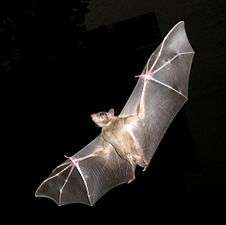
- Family: Pteropodidae (flying foxes, Old World fruit bats)
- Subfamily: Pteropodinae
- Genus: Rousettus
- Egyptian fruit bat, Rousettus aegyptiacus LC
- Genus: Rousettus
- Subfamily: Pteropodinae
- Family: Vespertilionidae
- Subfamily: Myotinae
- Genus: Myotis
- Lesser mouse-eared bat, Myotis blythii LR/lc
- Long-fingered bat, Myotis capaccinii VU
- Geoffroy's bat, Myotis emarginatus VU
- Greater mouse-eared bat, Myotis myotis LR/nt
- Natterer's bat, Myotis nattereri LR/lc
- Genus: Myotis
- Subfamily: Vespertilioninae
- Genus: Eptesicus
- Serotine bat, Eptesicus serotinus LR/lc
- Genus: Hypsugo
- Desert pipistrelle, Hypsugo ariel DD
- Bodenheimer's pipistrelle, Hypsugo bodenheimeri LR/nt
- Savi's pipistrelle, Hypsugo savii LR/lc
- Genus: Nyctalus
- Common noctule, Nyctalus noctula LR/lc
- Genus: Pipistrellus
- Kuhl's pipistrelle, Pipistrellus kuhlii LC
- Common pipistrelle, Pipistrellus pipistrellus LC
- Rüppell's pipistrelle, Pipistrellus rueppelli LC
- Genus: Plecotus
- Grey long-eared bat, Plecotus austriacus LR/lc
- Genus: Eptesicus
- Subfamily: Miniopterinae
- Genus: Miniopterus
- Schreibers' long-fingered bat, Miniopterus schreibersii LC
- Genus: Miniopterus
- Subfamily: Myotinae
- Family: Rhinopomatidae
- Genus: Rhinopoma
- Lesser mouse-tailed bat, Rhinopoma hardwickei LC
- Genus: Rhinopoma
- Family: Molossidae
- Genus: Tadarida
- European free-tailed bat, Tadarida teniotis LR/lc
- Genus: Tadarida
- Family: Emballonuridae
- Genus: Taphozous
- Naked-rumped tomb bat, Taphozous nudiventris LC
- Genus: Taphozous
- Family: Nycteridae
- Genus: Nycteris
- Egyptian slit-faced bat, Nycteris thebaica LC
- Genus: Nycteris
- Family: Rhinolophidae
- Subfamily: Rhinolophinae
- Genus: Rhinolophus
- Blasius's horseshoe bat, Rhinolophus blasii NT
- Geoffroy's horseshoe bat, Rhinolophus clivosus LC
- Mediterranean horseshoe bat, Rhinolophus euryale VU
- Greater horseshoe bat, Rhinolophus ferrumequinum LR/nt
- Lesser horseshoe bat, Rhinolophus hipposideros LC
- Mehely's horseshoe bat, Rhinolophus mehelyi VU
- Genus: Rhinolophus
- Subfamily: Hipposiderinae
- Genus: Asellia
- Trident leaf-nosed bat, Asellia tridens LC
- Genus: Asellia
- Subfamily: Rhinolophinae
Order: Cetacea (whales)
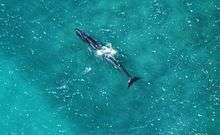

The order Cetacea includes whales, dolphins and porpoises. They are the mammals most fully adapted to aquatic life with a spindle-shaped nearly hairless body, protected by a thick layer of blubber, and forelimbs and tail modified to provide propulsion underwater.
- Suborder: Mysticeti
- Family: Balaenopteridae
- Genus: Balaenoptera
- Fin whale, Balaenoptera physalus EN
- Bryde's whale, Balaenoptera edeni DD[3]
- Common minke whale, Balaenoptera acutorostrata LC [4]
- Fin whale, Balaenoptera physalus EN
- Genus: Balaenoptera
- Family: Balaenopteridae
- Subfamily: Megapterinae
- Genus: Megaptera
- Humpback whale, Megaptera novaeangliae LC (two or more populations occurring in the Mediterranean Sea and Gulf of Aqaba)[3]
- Family: Eschrichtiidae
- Genus: Eschrichtius
- North Atlantic gray whale, Eschrichtius robustus EX (possibly a vagrant from the Pacific was recorded in 2010[5])
- Genus: Eschrichtius
- Genus: Megaptera
- Suborder: Odontoceti
- Family: Physeteridae
- Genus: Physeter
- Sperm whale, Physeter macrocephalus VU
- Genus: Physeter
- Family: Ziphidae
- Genus: Ziphius
- Cuvier's beaked whale, Ziphius cavirostris LC
- Genus: Mesoplodon
- Gervais' beaked whale, Ziphius cavirostris DD
- Genus: Ziphius
- Superfamily: Platanistoidea
- Family: Delphinidae (marine dolphins)
- Genus: Tursiops
- Common bottlenose dolphin, Tursiops truncatus LC
- Genus: Steno
- Rough-toothed dolphin, Steno bredanensis DD (once being considered as vagrants, but later confirmed as residential[6])
- Genus: Stenella
- Striped dolphin, Stenella coeruleoalba DD
- Genus: Sousa
- Indo-Pacific humpbacked dolphin, Sousa chinensis DD
- Genus: Delphinus
- Short-beaked common dolphin, Delphinus delphis LC
- Genus: Grampus
- Risso's dolphin, Grampus griseus LC
- Genus: Orcinus
- Orca, Orcinus orca DD
- Genus: Pseudorca
- False killer whale, Pseudorca crassidens DD
- Genus: Globicephala
- Long-finned pilot whale, Globicephala melas DD
- Genus: Tursiops
- Family: Delphinidae (marine dolphins)
- Family: Physeteridae
Order: Carnivora (carnivorans)
There are over 260 species of carnivorans, the majority of which feed primarily on meat. They have a characteristic skull shape and dentition.
- Suborder: Feliformia
- Family: Felidae (cats)
- Subfamily: Felinae
- Genus: Caracal
- Caracal, Caracal caracal LC
- Genus: Felis
- Jungle cat, Felis chaus LC
- Sand cat, Felis margarita LC (extirpated from Israel)[7]
- African wildcat, Felis lybica LC
- Genus: Caracal
- Subfamily: Pantherinae
- Genus: Panthera
- Arabian leopard, Panthera pardus nimr CR—less than 10 isolated individuals were estimated to survive in the Judean Desert and the Negev highlands by 2002.[8]
- Asiatic lion, Panthera leo leo EN (extirpated from Israel)
- Genus: Panthera
- Subfamily: Felinae
- Family: Herpestidae (mongooses)
- Genus: Herpestes
- Egyptian mongoose, Herpestes ichneumon LC
- Genus: Herpestes
- Family: Hyaenidae (hyaenas)
- Genus: Hyaena
- Striped hyena, Hyaena hyaena NT
- Genus: Hyaena
- Family: Felidae (cats)
- Suborder: Caniformia
- Family: Canidae (dogs, foxes)
- Genus: Vulpes
- Blanford's fox, Vulpes cana VU
- Rüppell's fox, Vulpes rueppelli LC
- Red fox, Vulpes vulpes LC
- Fennec fox, Vulpes zerda LC
- Genus: Canis
- Golden jackal, Canis aureus LC
- Indian wolf, Canis lupus pallipes (subspecies not assessed for IUCN Red List)
- Arabian wolf, Canis lupus arabs (subspecies not assessed for IUCN Red List)
- Genus: Vulpes
- Family: Ursidae (bears)
- Genus: Ursus
- Syrian brown bear, Ursus arctos syriacus DD (possibly extinct)
- Genus: Ursus
- Family: Mustelidae (mustelids)
- Genus: Mustela
- Least weasel, Mustela nivalis LC
- Genus: Vormela
- Marbled polecat, Vormela peregusna LC
- Genus: Martes
- Beech marten, Martes foina LC
- Genus: Mellivora
- Ratel, Mellivora capensis LC
- Genus: Meles
- Eurasian badger, Meles meles LC
- Genus: Lutra
- European otter, Lutra lutra VU
- Genus: Mustela
- Family: Phocidae (earless seals)
- Genus: Monachus
- Mediterranean monk seal, Monachus monachus CR
- Genus: Monachus
- Family: Canidae (dogs, foxes)
Order: Perissodactyla (odd-toed ungulates)
The odd-toed ungulates are browsing and grazing mammals. They are usually large to very large, and have relatively simple stomachs and a large middle toe.
- Family: Equidae (horses etc.)
- Genus: Equus
- Syrian wild ass, Equus hemionus hemippus EX
- Turkmenian kulan, Equus hemionus kulan EN
- Genus: Equus
Order: Artiodactyla (even-toed ungulates)
The even-toed ungulates are ungulates whose weight is borne about equally by the third and fourth toes, rather than mostly or entirely by the third as in perissodactyls. There are about 220 artiodactyl species, including many that are of great economic importance to humans.
- Family: Hippopotamidae (hippopotamuses)
- Genus: Hippopotamus
- Hippopotamus, Hippopotamus amphibius EX
- Genus: Hippopotamus
- Family: Cervidae (deer)
- Subfamily: Cervinae
- Genus: Dama
- Persian fallow deer, Dama mesopotamica EN
- Genus: Dama
- Subfamily: Capreolinae
- Subfamily: Cervinae
- Family: Bovidae (cattle, antelope, sheep, goats)
- Subfamily: Antilopinae
- Genus: Gazella
- Dorcas gazelle, Gazella dorcas VU
- Mountain gazelle, Gazella gazella VU
- Arabian gazelle, subspecies acacia gazelle, Gazella arabica or Gazella acaciae CR
- Genus: Gazella
- Subfamily: Caprinae
- Genus: Capra
- Nubian ibex, Capra nubiana EN
- Genus: Ovis
- Mouflon, Ovis orientalis orientalis VU
- Genus: Capra
- Subfamily: Hippotraginae
- Genus: Oryx
- Arabian oryx, Oryx leucoryx EN
- Scimitar oryx, Oryx dammah EN
- Genus: Oryx
- Subfamily: Antilopinae
- Family: Suidae (boars)
- Genus: Sus
- Wild boar, Sus scrofa LC
- Genus: Sus
- Family: Camelidae (camels, llamas)
See also
References
- This list is derived from the IUCN Red List which lists species of mammals and includes those mammals that have recently been classified as extinct (since 1500 AD). The taxonomy and naming of the individual species is based on those used in existing Wikipedia articles as of 21 May 2007 and supplemented by the common names and taxonomy from the IUCN, Smithsonian Institution, or University of Michigan where no Wikipedia article was available.
- Amori, G.; Hutterer, R.; Kryštufek, B.; Yigit, N.; Mitsain, G. & Palomo, L. J. (2016). "Hystrix indica". IUCN Red List of Threatened Species. 2016: e.T10751A115099509.
- Sciara di N.G., Smeenk C., Rudolph P., Addink M., Baldwin R., Cesario A., Costa M., Feingold D., Fumagalli M., Kerem D., Goffman O., Elasar M., Scheinin A., Hadar N.. 2014. Summary review of cetaceans of the Red Sea.
- Update on the Cetacean Fauna of the Mediterranean Levantine Basin
- "Are grey whales climate change's big winners?".
- "Archived copy" (PDF). Archived from the original (PDF) on 2016-05-13. Retrieved 2016-01-28.CS1 maint: archived copy as title (link)
- Dolev, A., Perevolotsky, A. (2002). Endangered species in Israel: Red List of threatened animals, vertebrates. Nature and Parks Authority and The Society for the Protection of Nature in Israel, Jerusalem.
- Perez, I., Geffen, E., Mokady, O. (2006). Critically Endangered Arabian leopards Panthera pardus nimr in Israel: estimating population parameters using molecular scatology. Oryx 40 (3): 295–301.
External links
- "Mammal Species of the World". Smithsonian National Museum of Natural History. 2005. Archived from the original on 27 April 2007. Retrieved 22 May 2007.
- "Animal Diversity Web". University of Michigan Museum of Zoology. 1995–2006. Retrieved 22 May 2007.

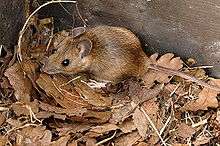
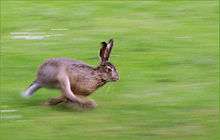
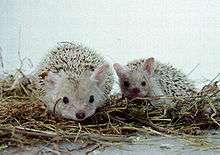

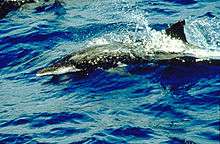

.jpg)

